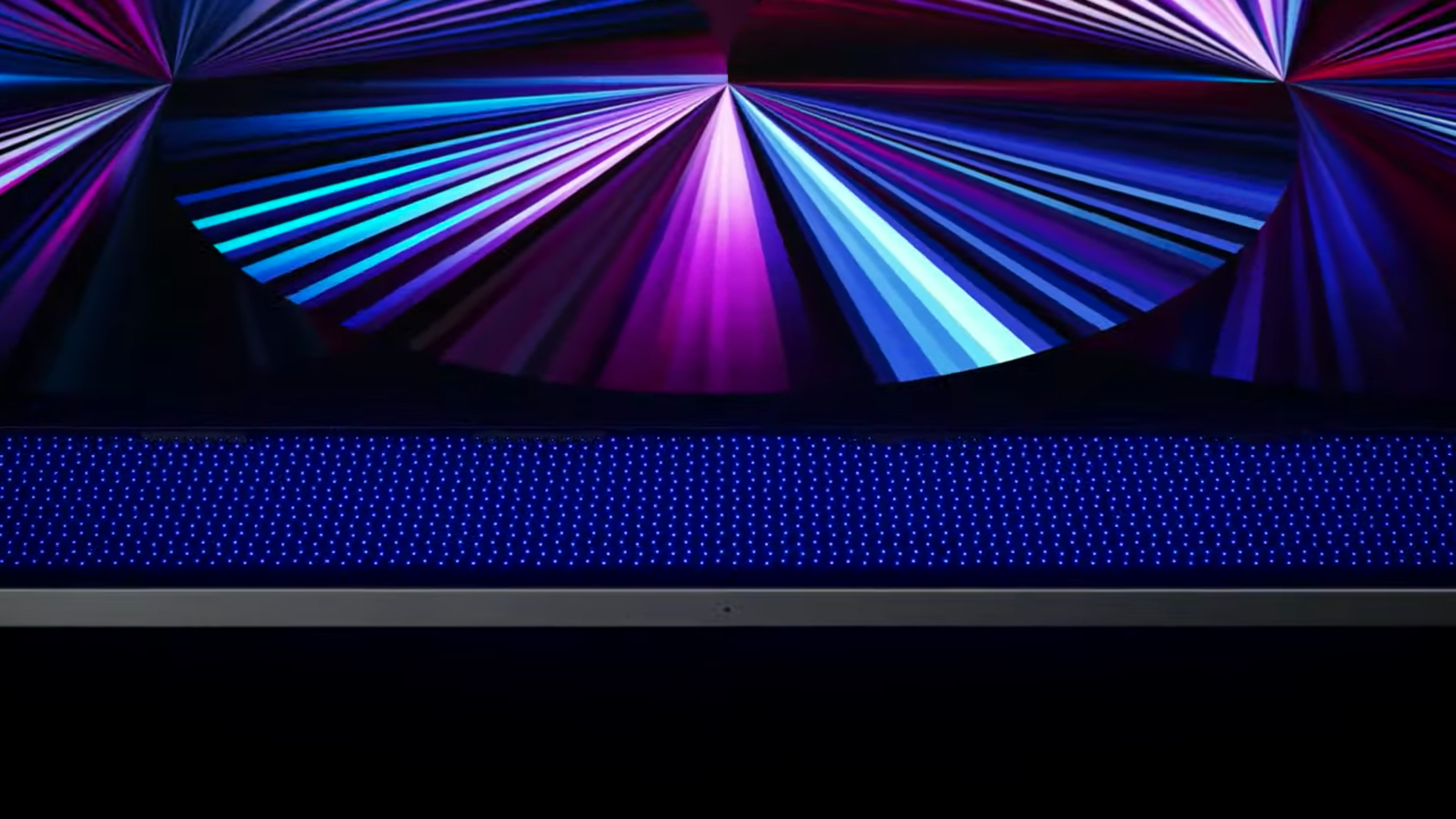

Among Apple's 'Spring Loaded' announcements were two products that take the company's M1 processor from being massively impressive to actively radical. The first is the iMac 24-inch (M1, 2021), which is the first Mac actually designed around the new chip. And the second is the iPad Pro (2021), which shows that the M1 can bring desktop-level power to basically any form factor.
The first three M1 Macs were somewhat disappointingly conservative – the MacBook Air (M1, 2020), MacBook Pro 13-inch (M1, 2020) and Mac Mini were all effectively the same design. The sheer power and battery life papered over the fact that Apple's new chip seemingly hadn't enabled any leap forwards in actual product design.
But now we're seeing that Apple just didn't want to overplay its hand right away. The new iMac is almost implausibly thin, because it's basically all screen at the top, and the entirety of the computer part is tucked away in its chin. This wasn't possible with Intel chips, unless you wanted it to have the processing power of an oven clock.
But the iMac isn't the M1 product that's most radical here. No, that's the iPad Pro 2021, because it makes the iMac's construction look positively basic in comparison.
The iMac wows with its 11.5mm thickness, but the iPad Pro is nearly half that, at just 6.4mm thick. But it contains the same processor! The same processor that performs at roughly the equivalent level as the highest-end 16-inch Intel MacBook Pro. Now, I expect it will have some thermal limitations for long periods of hardcore use when compared to the iMac, but it still makes anything else in remotely the same kind of form factor look like a Speak N Spell in comparison.
Yet that body also fits in an all-day battery, 5G connectivity, pro-level storage AND one of the most impressive screens on any consumer device today.

The iPad Pro's Mini-LED screen is a first for Apple, and for consumer tablets.
The Mini-LED display on the 12.9-inch iPad Pro has 10,000 tiny LEDs and over 2,500 local dimming zones for ultra-precise contrast control. For comparison, Samsung's QN95A TV is its flagship 4K TV of 2021 and uses Mini-LEDs, but has around 800 dimming zones. Oh, and is only around 20% brighter at peak than the iPad Pro. And we just have that TV a well-deserved rave review, because it's phenomenal. And the iPad Pro's screen could be even more dazzling!
Get all the latest news, reviews, deals and buying guides on gorgeous tech, home and active products from the T3 experts
Now think about what Apple could do with a MacBook Pro that's been designed with all this in mind. The current MacBook Pro 16-inch is 16mm thick – that's a lot of extra room…
A 4K Mini-LED screen with the same kind of pro-level HDR brightness? Totally possible, technologically. We should be expecting 5G to be an option for the first time in a MacBook Pro surely, now the iPad Pro has opened that door?
If the M1 can run fanless in a 6.4mm case, imagine what a souped up version in a thicker case with fans should be able to achieve? Hell, Apple could probably duct-tape two M1s together, basically, and just brute-force its way to the top of the performance pyramid.
What kind of battery life could Apple get in a case that size? What kind of speaker tech?
The iPad Pro shows what a pro Apple machine can be in the most minimal of spaces – I can't wait for a MacBook Pro to show us what it can do with room to manoeuvre.
Matt is T3's former AV and Smart Home Editor (UK), master of all things audiovisual, overseeing our TV, speakers and headphones coverage. He also covered smart home products and large appliances, as well as our toys and games articles. He's can explain both what Dolby Vision IQ is and why the Lego you're building doesn't fit together the way the instructions say, so is truly invaluable. Matt has worked for tech publications for over 10 years, in print and online, including running T3's print magazine and launching its most recent redesign. He's also contributed to a huge number of tech and gaming titles over the years. Say hello if you see him roaming the halls at CES, IFA or Toy Fair. Matt now works for our sister title TechRadar.
